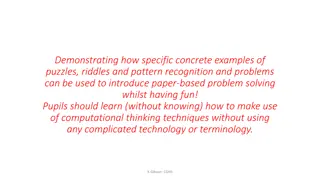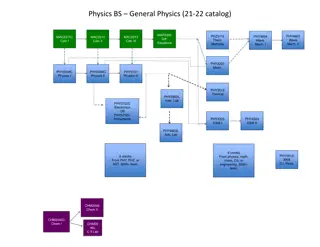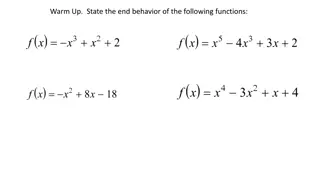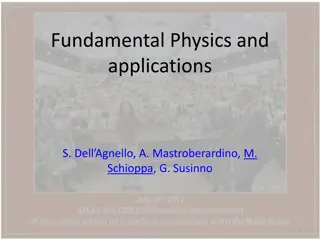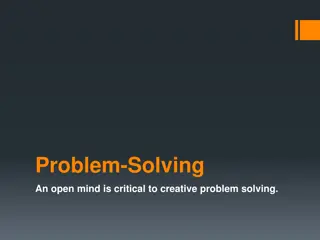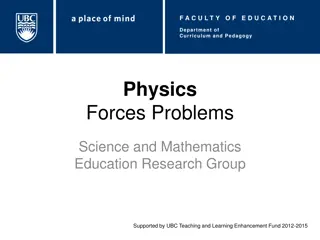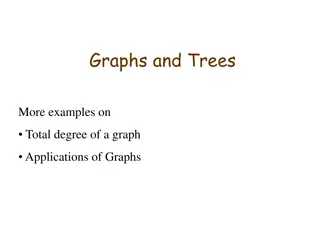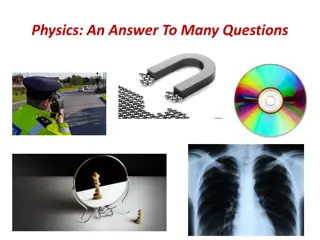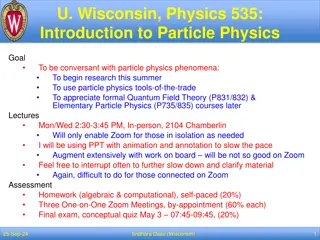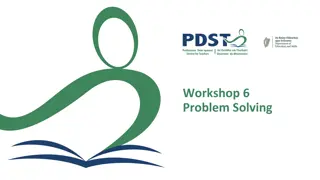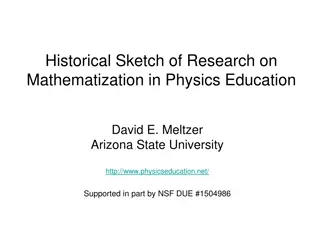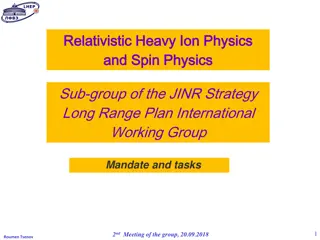Physics Problem-solving Scenarios
Various physics problems involving motion, velocity, acceleration, and projectile motion. Understand concepts through practical examples and calculations such as average velocity, simultaneous motion, acceleration determination, and projectile motion scenarios. Enhance your problem-solving skills in physics with these challenging scenarios.
Download Presentation

Please find below an Image/Link to download the presentation.
The content on the website is provided AS IS for your information and personal use only. It may not be sold, licensed, or shared on other websites without obtaining consent from the author.If you encounter any issues during the download, it is possible that the publisher has removed the file from their server.
You are allowed to download the files provided on this website for personal or commercial use, subject to the condition that they are used lawfully. All files are the property of their respective owners.
The content on the website is provided AS IS for your information and personal use only. It may not be sold, licensed, or shared on other websites without obtaining consent from the author.
E N D
Presentation Transcript
A toy train starts moving from point A towards point B along the half-circular track shown in Figure 1. It continues its motion through the straight track from point B to reach point C. It then goes back and stops at point B. What is the average velocity of the train (in cm/s) if its average speed is 3.0 cm/s?
A ball is thrown upward from the ground with an initial speed of 25 m/s; at the same instant, another ball is dropped from a building 15 m high. After how long will the balls be at the same height above the ground?
Two objects move with initial velocity 8.00 m/s, final velocity 16.0 m/s, and constant accelerations. (a) The first object has displacement 20.0 m. Find its acceleration. (b) The second object travels a total distance of 22.0 m. Find its acceleration. (b) (a)
It is possible to shoot an arrow at a speed as high as 100 m/s. (a) If friction can be ignored, how high would an arrow launched at this speed rise if shot straight up? (b) How long would the arrow be in the air?
It is possible to shoot an arrow at a speed as high as 100 m/s. (a) If friction can be ignored, how high would an arrow launched at this speed rise if shot straight up? (b) How long would the arrow be in the air?
A student throws a set of keys vertically upward to her sorority sister, who is in a window 4.00 m above. The second student catches the keys 1.50 s later. (a) With what initial velocity were the keys thrown? (b) What was the velocity of the keys just before they were caught? (a)
A car traveling at a constant speed of 45.0 m/s passes a trooper on a motorcycle hidden behind a billboard. One second after the speeding car passes the billboard, the trooper sets out from the billboard to catch the car, accelerating at a constant rate of 3.00 m/s2. How long does it take the trooper to overtake the car?


